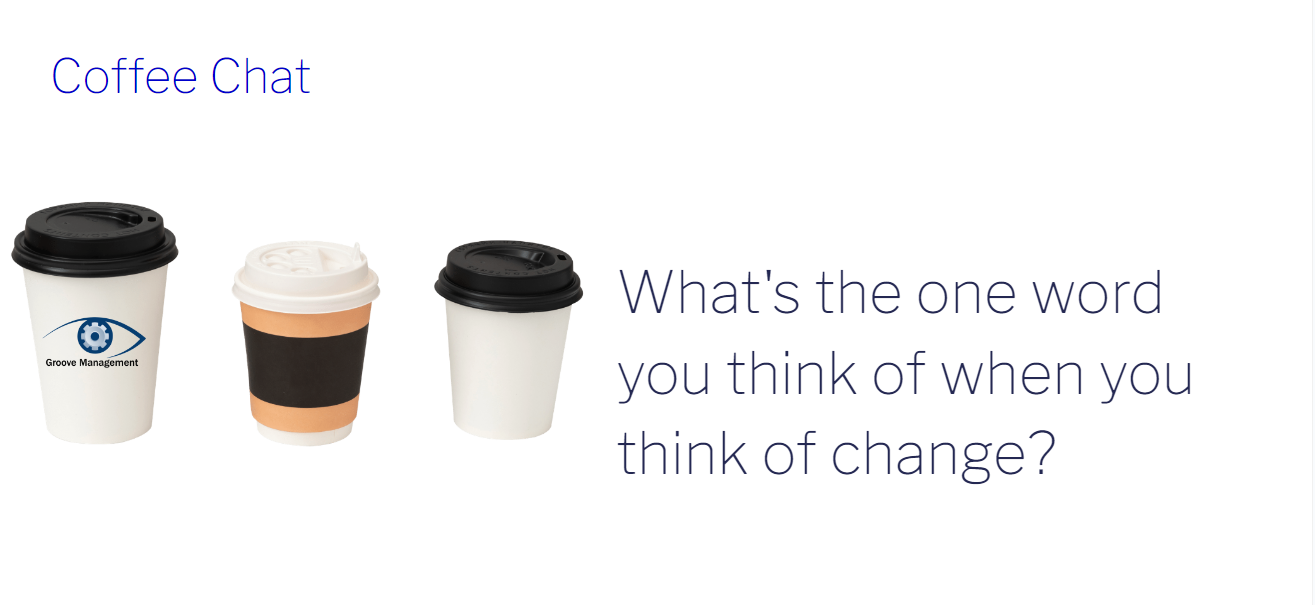Seven Insights from a Virtual Workshop Series
Reltio Essentials of Management Virtual Workshop using REACH Quotient Backgrounds
Over the last six months, I've been actively involved in creating a six-course virtual module series for one of Groove Management's clients—Reltio. I would like to share this experience with you and illustrate what it takes to build an effective virtual workshop series for leaders of a successful company.
Here are my seven insights and lessons learned from this experience.
1. Planning phase requires time.
An effective program must have specific goals: activating company values, developing leadership competencies, fostering cross-team collaboration, etc. It is crucial to allocate time for planning and selecting content and activities that align with these goals.
There is also a tendency at the planning stage to focus primarily on content: after all, there are so many ideas we want to share. One way to balance this is to create categories such as Presentation, Guided Discussion, Interactive Activity, and then assess what percentage of time is spent on each type of learning. The most effective way to learn is to encourage participants to engage with each other and share experiences. It is important to incorporate these interactive elements into the mix and reduce the amount of new content delivered.
2. Coffee chat could be a way to tune in.
I love starting each session at least five minutes early. This time is called coffee chat. As with regular events, people usually come early and mingle. We can do the same online by opening the Zoom link and having a question that can be part of the conversation. In some cases, it could be done in the main room. But I’ve also had success leveraging breakout rooms for this activity.
Typically, coffee chat can extend into the main meeting time by up to five minutes. Each coffee chat would have a question connected with the topic at hand: e.g., what one word do you associate with change? As the session progresses, we can reflect back on the sentiment (positive or negative) and see as people's perspectives shift as the discussion progresses.
3. Executives as Faculty Resonated the Most.
An important aspect of facilitated learning has been that each module was facilitated by two faculty members from Groove Management, and two senior leaders from the client’s organization, including the CEO. Content & perspectives shared by executives resonate the most with participants.
Involving executives requires obtaining their buy-in and commitment. We planned at least three planning meetings: general focus of the module discussion, deep dive into details, and dry run.
Executives could run interactive sessions, share stories from their experiences, or lead facilitated discussions. Groove Management facilitators provided guidance and assistance in activating ideas that executives wanted to pursue, and showed them how to engage with the content or insights they wanted to share.
One simple example would be not just reading the information from the slide but presenting the slide with some information and asking participants to react to the information: post True or False in chat, say what’s missing, etc.
4. Chat can be an effective way to create and manage discussion with a larger group.
A question can be asked, people respond in chat, then a few people could be called on to share their thoughts with the whole group. One assumption I had was that any question could be asked at any time, and unfortunately, this is not the case. The group needs to build some familiarity with this form of communication first.
When starting with chat, it’s better to start with questions that require very short answers: a symbol (+ / -), T/F for True or False, etc. Once participants get more comfortable using chat, they start engaging more and sharing their opinions in chat more openly. Then facilitators can comment on what was shared and invite some of the responders to explain their thinking using voice.
We’ve used polls as well, and they are a great tool, but once participants start using chat more, it can be a great way to keep the discussion going without breaking the flow of the overall session.
5. It helps to have and enforce ground rules.
Securing buy-in on ground rules helps ensure that the sessions are orderly, and disruptive or disrespectful behavior is avoided. The biggest challenge for virtual sessions is multitasking: there is always a temptation to do something else concurrently for a busy manager. We insisted on not multitasking, keeping the cameras on.
Surprisingly, the rule to keep cameras on had to be enforced by removing some people from the call. Surprisingly, it increased engagement and participation. Just make sure that your Zoom settings allow participants to rejoin the meeting once they turn on the camera.
6. Smaller breakout groups are preferable to larger groups.
Each of our 90-minute modules had a 12-15 minute breakout. Given the audience size of 30-40 people, we started with four groups, so that we’d have time later to hear from each group. However, we found that smaller groups actually work better, with not 7-10, but rather 3-4 participants.
One of the best types of breakouts some teams enjoy is 1x1 groups, with only two participants working together. The downside is that not all groups will get to present the results, but if the results are on slides, they can still be reviewed.
7. Takeaways could be a great way to reflect on what was learned.
At the end of each session, we’d ask for takeaways. We’d pick one person to select someone to share. And then each person would share, and select the person to go next. This creates a lively and interactive way to close out each module.
Overall, it appears that virtual learning can be very engaging and effective, and there are small tweaks that can be made to refine the experience for both facilitators and learners. Read more about our approach to Takeways Here
In summary, while virtual workshops are not as effective as in person sessions, with the right approach and commitment from facilitators and participants, it is possible to creating enriching learning experiences in a virtual setting.



